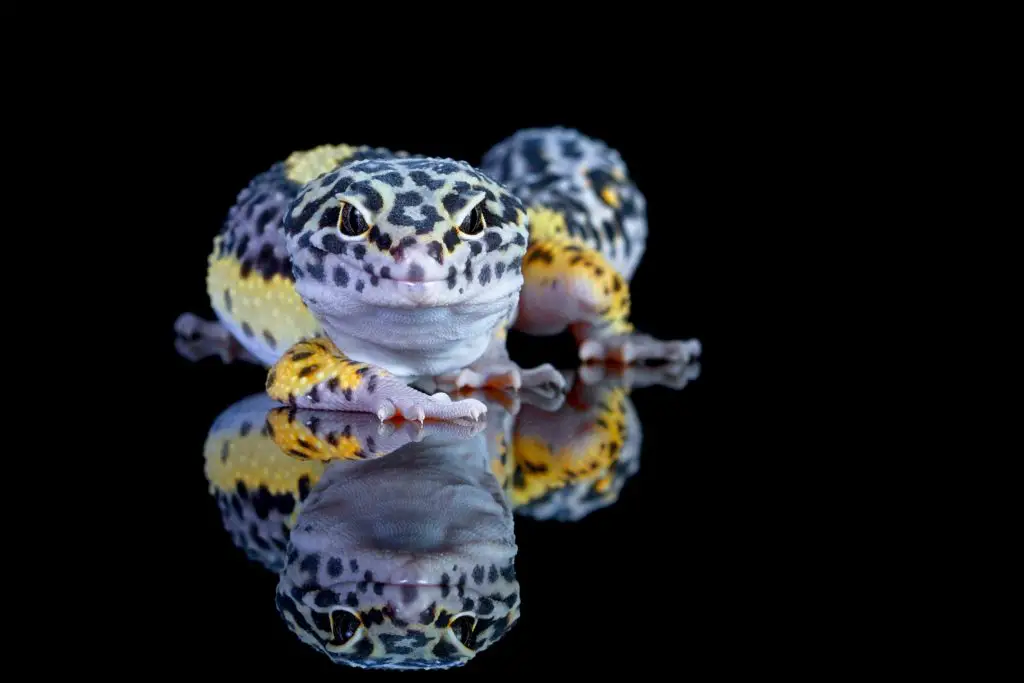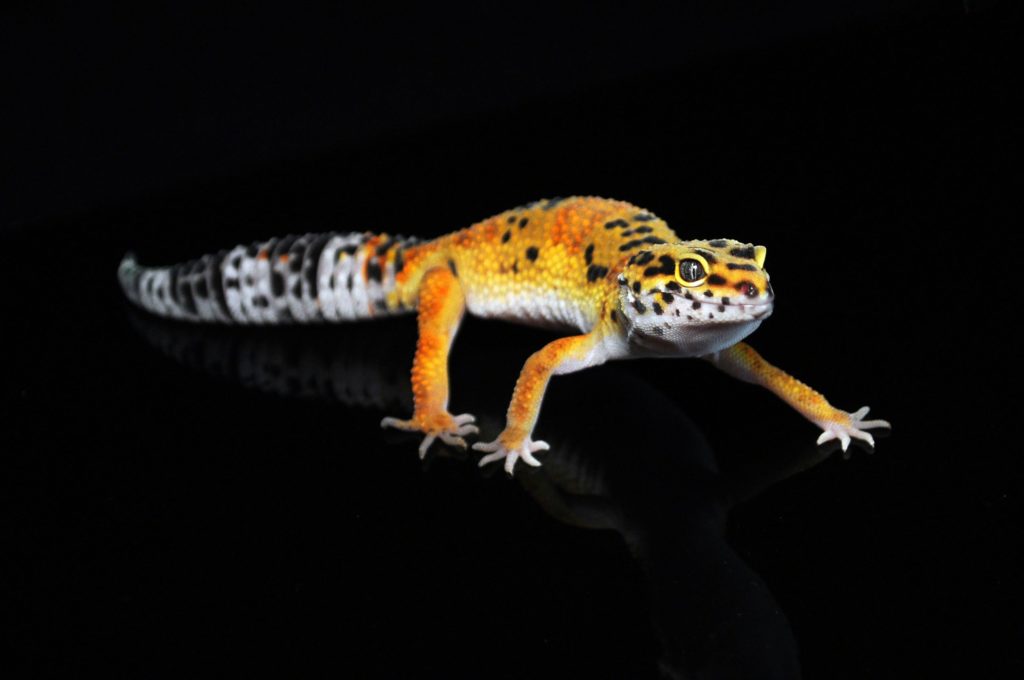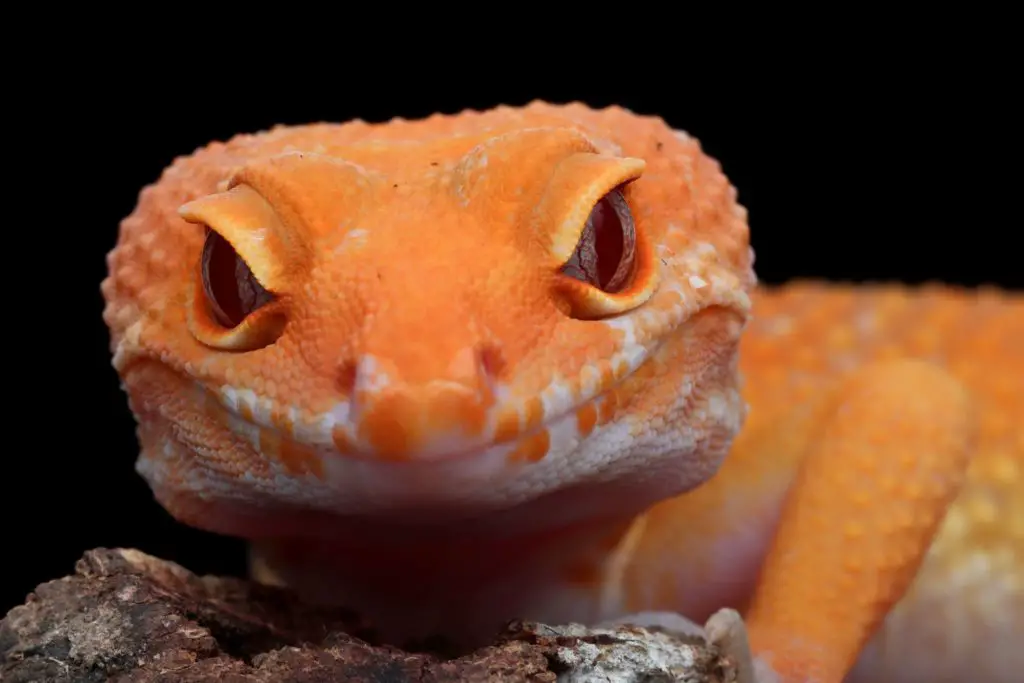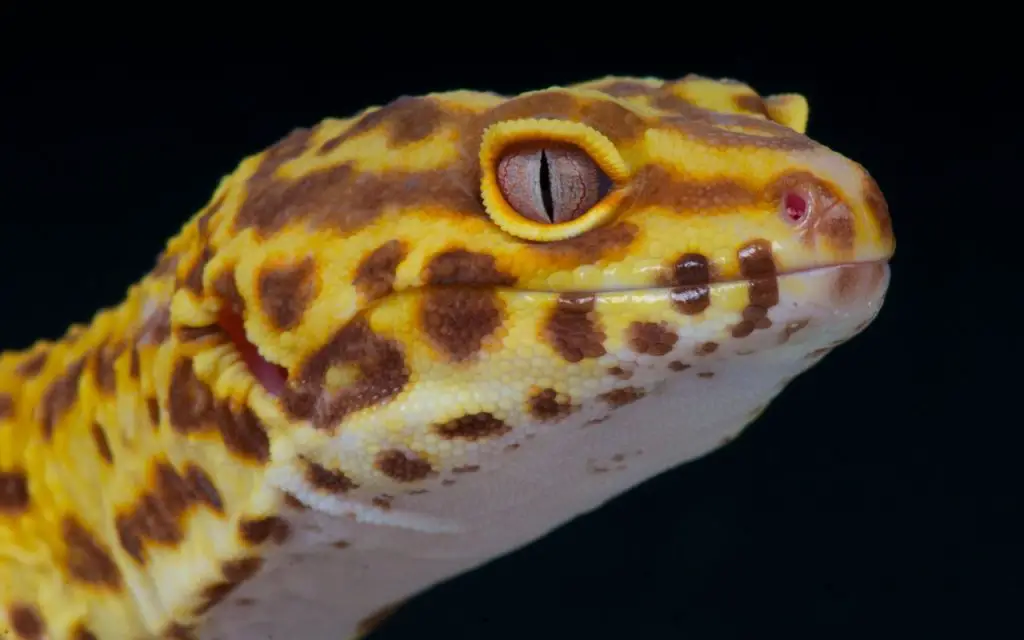Leopard geckos might look small, but they still need a certain amount of space to thrive. Let’s look at the size of tank a full grown adult would need…
Last updated on February 1st, 2023 at 09:26 am
A full-grown healthy leopard gecko typically needs an enclosure size of a 10-20 gallon tank up until the 30-40 gallon tank. Although its size, age, and health issues should be considered when choosing one. Generally speaking, a healthy adult of average size will be happy in a 20 gallon.
Some additional factors that can help a leopard gecko feel comfortable are ensuring the tank can handle these husbandry necessities:
- A heat source.
- Substrate or ground cover.
- Available places where they can hide.
- Capability to maintain humidity inside the enclosure.
All these are considered when choosing a tank for your leopard gecko. Lastly, don’t forget to add their food bowl and water dishes to estimate the tank size.
Reminder: There are also instances where geckos might need a different treatment, which is why considering the gecko’s health is also essential. An excellent example is geckos that are physically disabled; they need additional care and possibly smaller enclosures to survive.

Leopard gecko tank size for 2
For every leopard gecko you put inside the tank, you will add or consider another five gallons to the size. Doing the math, if you are adding one more gecko and you have a 10-gallon tank, you should consider a 15-gallon or higher number type of tank.
15-gallon tanks are enough to house 1-3 adult geckos already, but it’s not the best recommendation. If you want to expand more, that is entirely up to you and whatever your pet needs.
However, you should avoid putting them in tall, arboreal enclosures, as the leopard geckos prefer shallow terrestrial setups.
In addition, don’t forget to consider the geckos’ needs, like the heat sources, hides, and substrates that all fit together in one enclosure. Make sure their space is not cramped; if they are, you’ll either need to remove unnecessary items or get a bigger tank.
Are 2 leopard geckos allowed in one tank?
Adding two leopard geckos is fine, but it’s not as easy as reciting the alphabet song. You must check on specific procedures first because you cannot just throw two of them inside and hope everything will work out fine.
The first approach is always to check if the two geckos you have in mind will not kill or bully the other. Not going through procedures first might get one or both of your leopard geckos in trouble.
Think of it as any other common pet. An example would be introducing two different dogs to each other; they need to get familiar with a lot of things like their scents.
The same concept can be applied to geckos except that reptile pets’ needs differ from a common fur pet at home.
Now, two adult females (or more) are okay to cohabitate in a tank. But again, it’s best to check if they like each other’s company first.
On the other hand, two males are not recommended, as they are very territorial. You are free to try it, but it’s a low guarantee that it will work.
If you plan to put both a female and male adult gecko together, it’s okay since it’s typical for breeding. But it’s not advisable as the male leopard gecko can bully the female, especially if it doesn’t like the company.
Lastly, if you managed to keep two geckos together, check if they are okay with eating in the same food bowl and using the same water dish. As some issues include unfair proportions due to one eating more than the other and so on.
Make sure you value your pets’ nutrition and don’t just leave them there after giving them their food; monitor them.
Fun fact: The recommended number of hides should be at least three.

20 gallon leopard gecko tank
This tank size is commonly picked among pet owners as you can easily change or remove hides and decorations as your leopard gecko grows older into an adult. It’s big enough but always manageable for cleaning and changing things up if need be.
Besides being a number one go-to, it is also the recommended size for an adult leopard gecko.
In terms of capacity, it can house up to two leopard geckos assuming that the two pets are comfortable with each other. Ensure they have enough hiding areas to settle in, and the decorations do not overcrowd the tank.
Your leopard geckos should be ventilated enough if you put two in one enclosure. Remember, two animals generate more humidity and more germs.

30 gallon leopard gecko tank
If you want to level up or expand your gecko’s enclosure to achieve its needs more, this size could be the right one for your pet.
It’s also ideally an enclosure big enough for “giant” leopard geckos. This tank size can hold three adult normal leopard geckos.
40 gallon leopard gecko tank
Like the 30-gallon tank, a 40-gallon tank is not as bad as others perceive it for their pets. Your leopard gecko will be comfortable enough to stay inside a wide tank if conditions are met.
Don’t forget to get the proper heat source on this one, as smaller heat bulbs would not work as intended. Your gecko might end up feeling colder than what is needed for them.
If it happens, never ignore signs that your gecko might feel anxious or stressed out. As big enclosures are one of the reasons why they might display unusual behaviors.
Remember that geckos usually settle in their “hides” to feel secure from predators; sometimes, big tanks contribute to your gecko’s fear.

10 gallon leopard gecko tank
A ten-gallon tank is ample enough space for your gecko. However, putting more than one pet inside wouldn’t be advisable.
As long as your pet’s necessities are met, they will be healthy and happy with a smaller enclosure. Never make excessive or lacking; otherwise, your pet’s health will be at risk.
Leopard gecko tank size in inches
To ensure that you are purchasing the right tank, ensure that your basis is length over height. Below is a guide to refer to using inches as a measurement. Some tanks are tall rather than long, so what your looking for when shopping is usually labelled “10 gallon long, 20 gallon long, etc.”
This also serves as a more accurate size comparison for your leopard gecko.
*Remember, you can use these size references to choose plastic tubs too, if that’s the kind of enclosure you prefer. A “tank” doesn’t have to be glass!
| Capacity in gallons | Capacity in liters | Size in inches |
| 10 | 37.9 | 24x9x13 |
| 20 | 79 | 30.25×12.5×12.5 |
| 30 | 127 | 26x18x12 |
| 40 | 151.4 | 48x13x17 |

Leopard gecko tank setup
In choosing or setting up the enclosure of your leopard gecko tank, you must ensure that you buy a tank made explicitly for reptiles. Never confuse the tanks with the ones used for fish.
You can read more about setups by searching for “leopard gecko” in the search box at the top of our homepage.
Using vivariums or plastic tubs instead
Vivariums are these beautifully assembled enclosures made for geckos and other reptiles. More specific detail is that wooden vivariums are recommended for a leopard gecko.
Still, plastic tubs can also be a big enough enclosure for your pet. After all, if you follow our Leopard Gecko enclosure guidelines, your pet will be fine.
Just monitor the tub’s temperature and ensure that the surface will not be too hot for the gecko. Plus, it’s the cheapest alternative out there.
Thermostats are recommended when using plastic tubs to make the enclosure’s temperature manageable and easily controlled to cater to the gecko’s needs.
But also keep a close eye on it as there might be instances where the temperature might not be a hundred percent accurate. There are more expensive alternatives, but it’s not required.

What size tub does a leopard gecko need?
For a plastic tub enclosure, it is recommended to use at least a 15-quart tub or 3.75 gallons. Like the rest of the tank sizes, it depends on your leopard gecko’s comfort.
The 15-quart mark is just a minimum requirement, and you are not limited to buying a larger one. Customize the plastic tub to allow proper ventilation and assemble it as needed.
FAQ relating to What size tank does a full grown leopard gecko need
What is a good size tank for a full grown leopard gecko?
Leopard geckos are recommended to be housed in a 20-gallon aquarium with plenty of hiding places and climbing surfaces.
What size tank does a full grown gecko need?
The sizes can range from 20-gallon up to 40-gallon tanks. Enclosure sizes vary depending on your gecko’s needs (and sometimes the owner’s preference).
However, you are not required to pick the biggest one, especially if you are on a tight budget. The smaller choice is good enough to provide a safe space for a leopard gecko.

Is a 20 gallon tank too big for a leopard gecko?
The 20-gallon tank enclosure is not too big. It is the recommended size for an adult leopard gecko.
A more critical aspect other than the actual size is how you assemble the enclosure for your pet, whether it’s with a tank or a plastic tub.
Never overcrowd their enclosures; you don’t have to worry much other than ensuring the necessary temperature and humidity.
Is a 50 gallon tank too big for a leopard gecko?
Keeping one leopard gecko in an enclosure no larger than 50 gallons is recommended. Although 20 gallons is enough, a 50 gallon tank is the best option if you are planning to house multiple leopard geckos in it.
A 50 gallon tank has a benefit too. More hiding spaces for your gecko or geckos are suitable.
But don’t forget to remind yourself that a big enclosure means more enormous needs in terms of heat sources and, of course, decoration appropriate for your pet.

